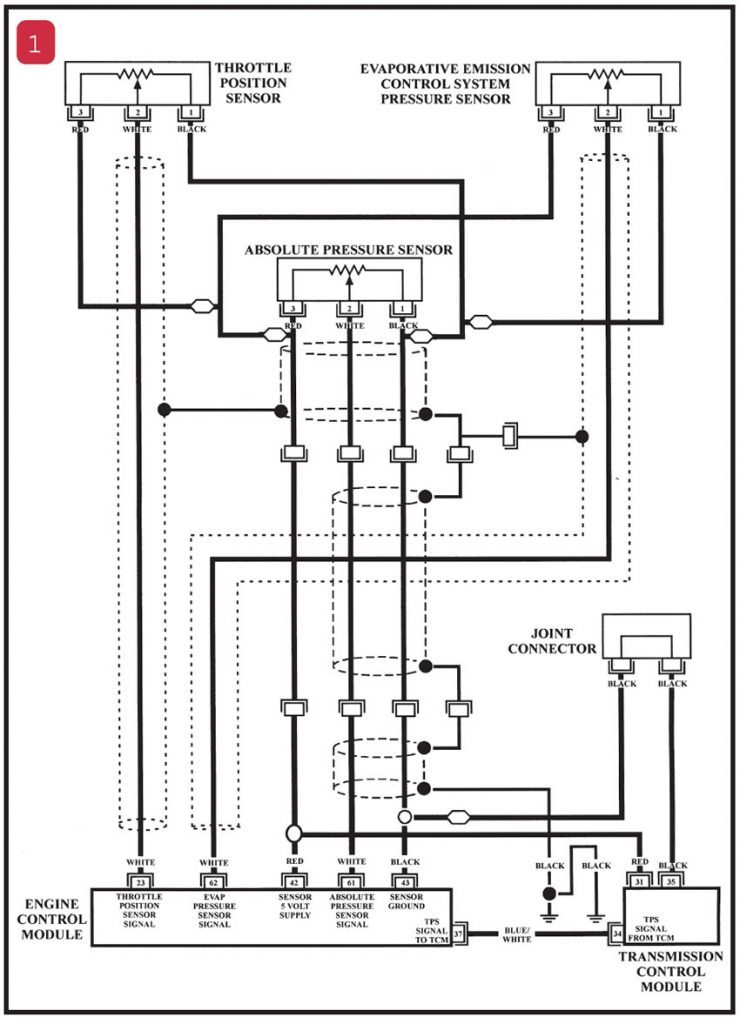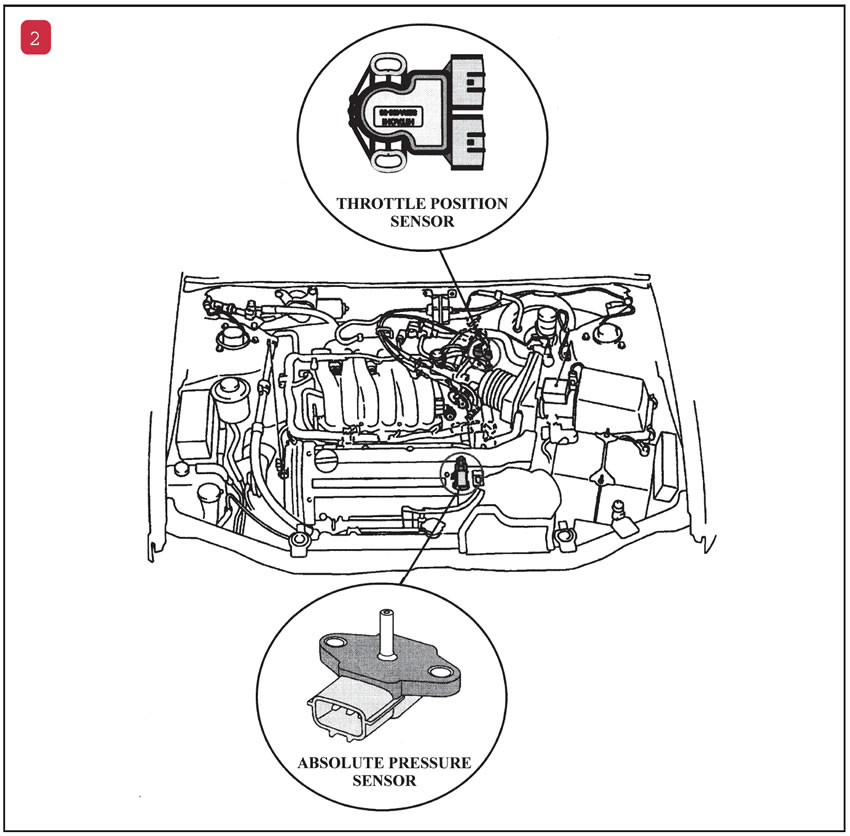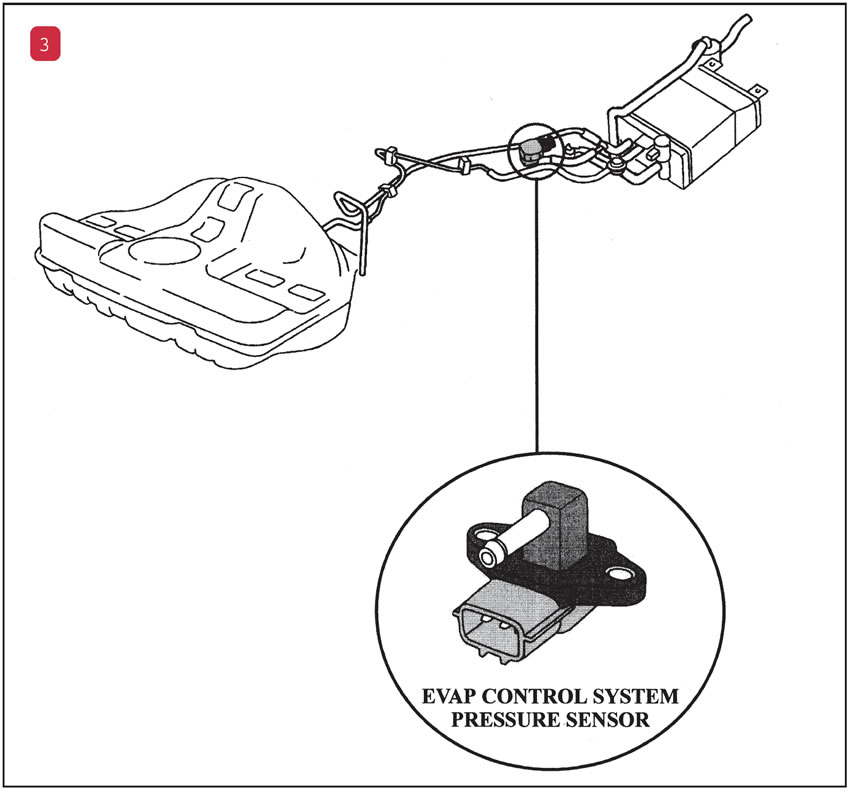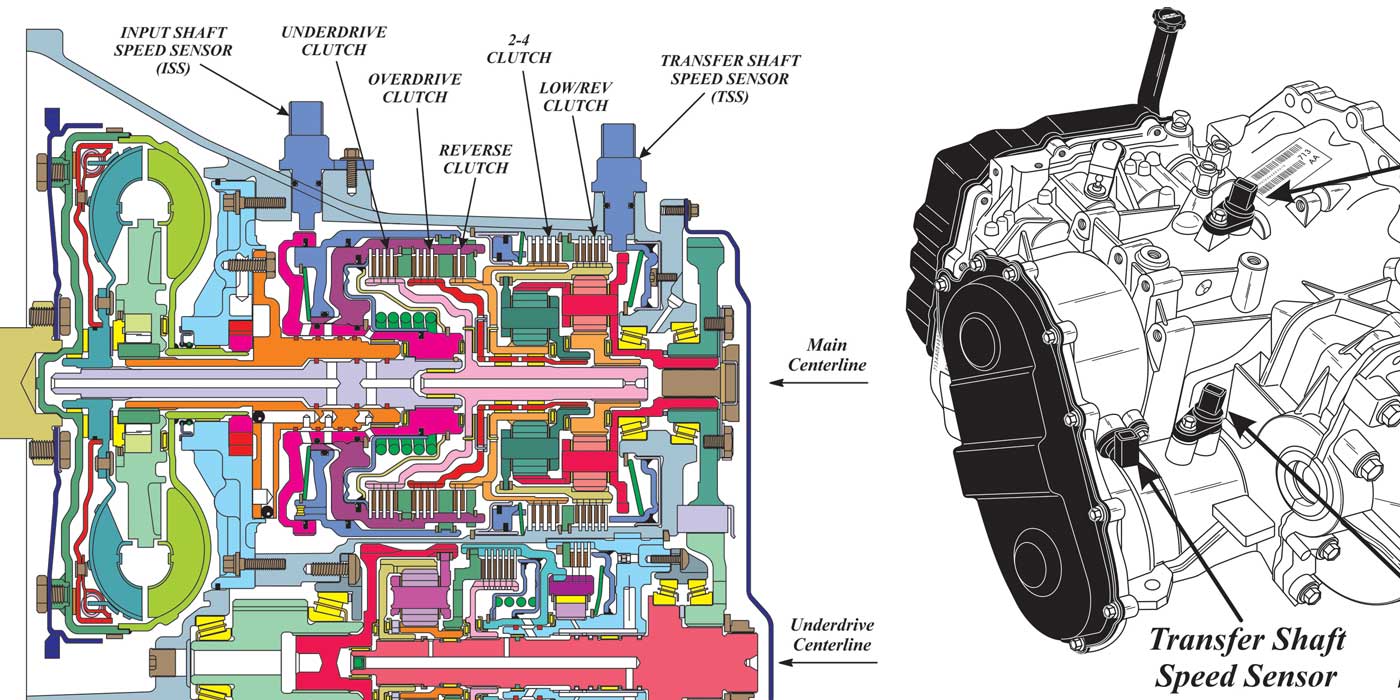
Shift Pointers
- Author: Pete Luban
This problem came to me from a shop that was working on a 1997 Nissan Maxima with an RE4FO4A transmission that came in with a complaint of late and harsh shifts.
Usually when a Nissan with electronic pressure control comes in with a harsh-shift complaint, the first thing we think of is a line-pressure control problem caused by a faulty pressure-control solenoid.
But when the complaint affects both shift feel and shift timing,things get involved. I’ll cut to the chase here; the pressure-control solenoid was NOT the cause of the harsh-shift complaint Ð or, for that matter, any other problem inside the transmission.
Once the technician verified this, he turned his attention to the control system in the car. Since the throttle-position sensor (TPS) is a main input for line-pressure control, and since we also have a shift-timing complaint, the TPS seemed to be the logical place to go next.
When the technician checked the TPS signal, his multimeter indicated 2 volts on that circuit. When the throttle was opened, the voltage barely climbed above 2.5 volts. This appears to be the right place for the complaint.
At this time the technician checked the TPS ground circuit, and the multimeter indicated 0.001 volt, well below the 0.1 that’s acceptable on a 5-volt-reference ground circuit.
Next, the technician disconnected the TPS and checked the signal-return wire for voltage in the event there might be a problem in the wiring harness or computer.
The signal-return wire had 4.5 volts. Right now you may be saying to yourself, “That’s not right!” Well, yes and no; if you’re doing this on a Toyota, for example, you are correct. But on a Nissan, that certainly is right. Nissan TPS signal circuits have almost the source voltage, which is 5 volts on that circuit. This is normal. That’s why a Nissan with the TPS disconnected will shift late instead of stacking the shifts as a Toyota will do. The 5-volt supply circuit with the TPS disconnected still had only 2 volts.
The time for a wiring schematic now has arrived. Referring to the wiring diagram in Figure 1, notice that the ECM supplies the 5-volt reference voltage for the TPS on the red wire at terminal 42.

Also notice that terminal 42 supplies 5 volts to the absolute pressure sensor, also on the red wire.
Terminal 42 supplies 5 volts on the same red wire to the pressure sensor of the evaporative-emission-control system.
Realizing that all three of these sensors receive 5 volts from the same source, the technician decided to check the 5-volt circuit at these other sensors. Guess what – all three sensors’ 5-volt supply circuits had 2 volts, the same voltage seen at the TPS 5-volt supply wire.
Now the technician began to unplug these sensors, one at a time, the location of which you can see in Figures 2 and 3. Lo and behold, when the absolute pressure sensor was disconnected, the other two sensors’ 5-volt supply circuits jumped to 5 volts!


Further inspection revealed that the absolute pressure sensor was internally shorted, resulting in the 2 volts on the 5-volt supply circuit and also affecting the voltage to the other sensors, which were supplied 5 volts from the same source.
The complaints of harsh and late shifts can be attributed to the fact that the ECM sends the TPS signal to the transmission control module, as you can see in the schematic in Figure 1, and this affected both line-pressure control and shift timing – simply &#$%~&* amazing!
Thanks to Leon and Monty Jacobs at Advance Transmissions for letting me in on this brain buster. Hats off to you guys for a job well done.
Until next time.

Pete Luban is a technical consultant for the Automatic Transmission Service Group (ATSG) and a frequent contributor to Transmission Digest.













